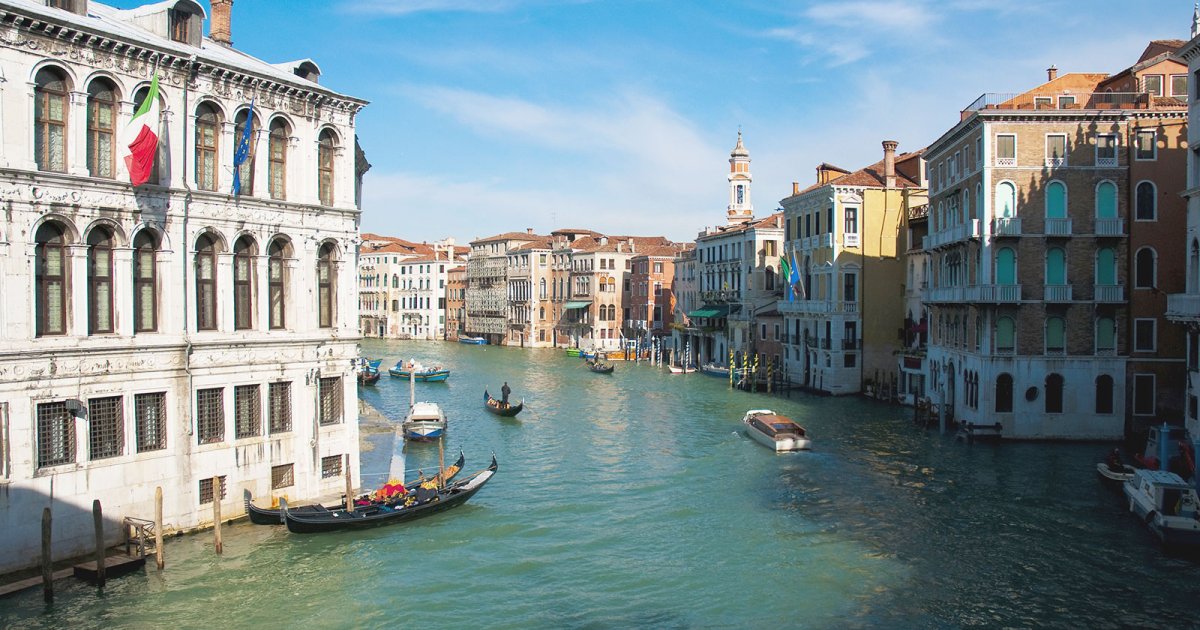GRAND CANAL, Third Part
 Language: English / USA
Language: English / USA
On your right after San Stae, you can see the enormous Ca' Pesaro , one of the most magnificent palaces of the Grand Canal. It is completely covered with Istrian stone; its construction began in the Baroque period of the 1600s and ended at the beginning of the 1700s. Admire the elegance of its two floors with column-shaped windows, and the strong, solid appearance of its lower floor with protruding stones. There are two museums you can visit inside: the Gallery of Modern Art and the Oriental Museum.
Following Ca' Pesaro, again on your right, is the tall façade of Ca' Corner della Regina that was rebuilt in the 18th century. Its name is linked to Caterina Cornaro, the Venetian noblewoman who became Queen of Cyprus; I talk about her more in the audio guides for the Basilica of San Zanipolo.
As you can see, this section of the Grand Canal has many palaces that have maintained their windows, loggias, or other Gothic elements, and almost seem to crown Ca' d'Oro, the late-Gothic fifteenth-century gem that you see sparkling on the left side. If you'd like to visit the elegant Franchetti Gallery, MyWoWo has a separate file dedicated to the museum.
Right next to Ca' d'Oro's pier, you'll see the protruding Sagredo Palace and the medieval remains in its façade; the palace is now home to an exclusive hotel.
You won't have a hard time recognizing the roof, portico, and loggia of the Pescherie, the historic and vibrant fish market opposite the palace. This set of buildings dates back to the early 1900s. After a short stretch of shore, you can now see the long, monotonous 16th-century Fabbriche Nuove, or New Factories building, which faces Ca' da Mosto, with Venetian-Byzantine style elements from the 13th century.
Just before the Rialto Bridge you can see two very important palaces facing each other: to your right is Camerlenghi Palace, and to the left is Fondaco dei Tedeschi, which was the trading venue for Germanic merchants and one of the Venetian economy's strengths. It was immediately reconstructed at the beginning of the 15th century after a very bad fire, and most importantly, was decorated by no less than Giorgione and Titian; unfortunately only traces of these frescoes remain, and are preserved today at Ca' d'Oro.
FUN FACT: Camerlenghi Palace was the city's treasury and had a prison on the ground floor where those who didn't pay their debts were held. In doing so, the prisoners could be seen by the passers-by, and the Venetians thought twice before accumulating any debts they couldn't pay!



